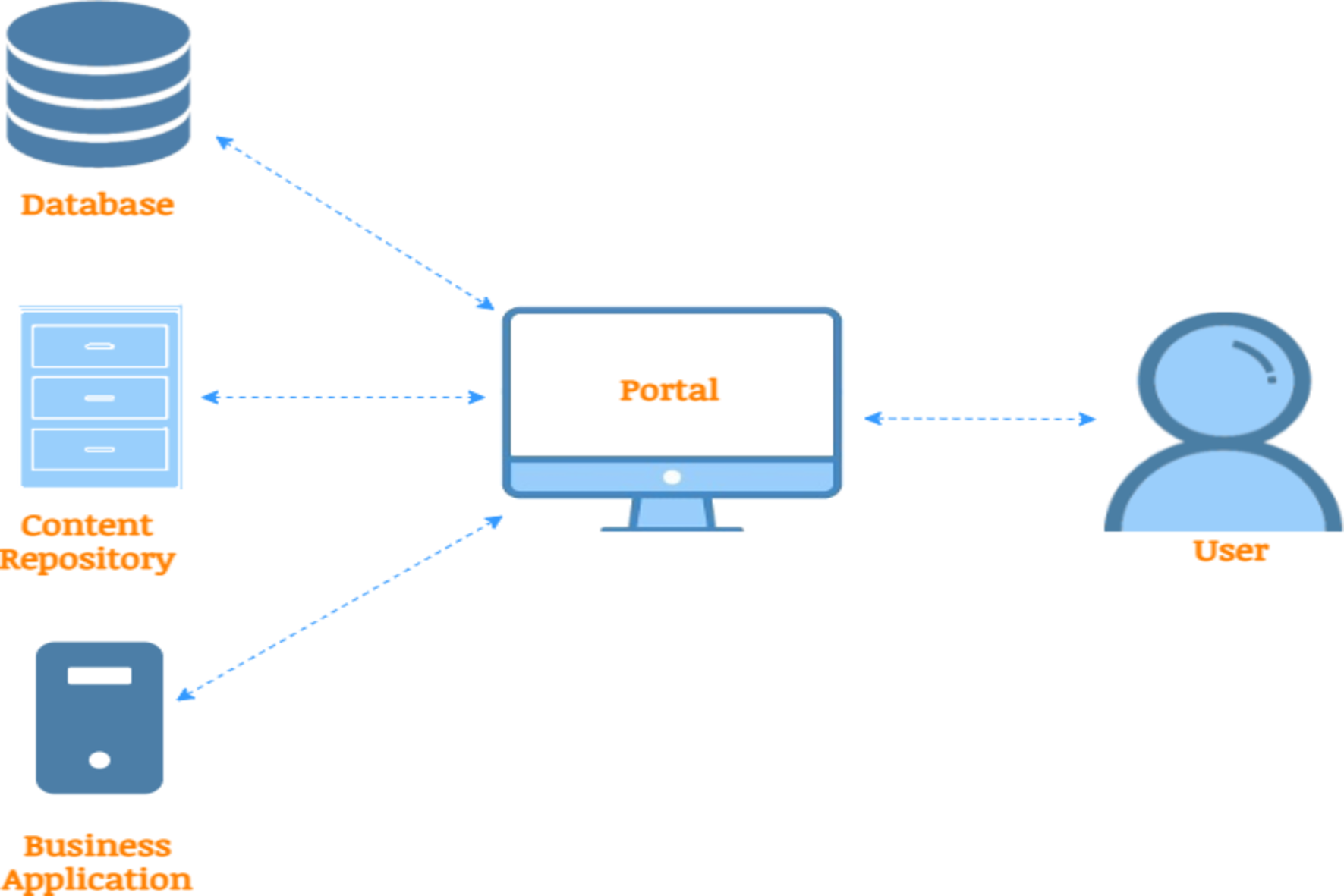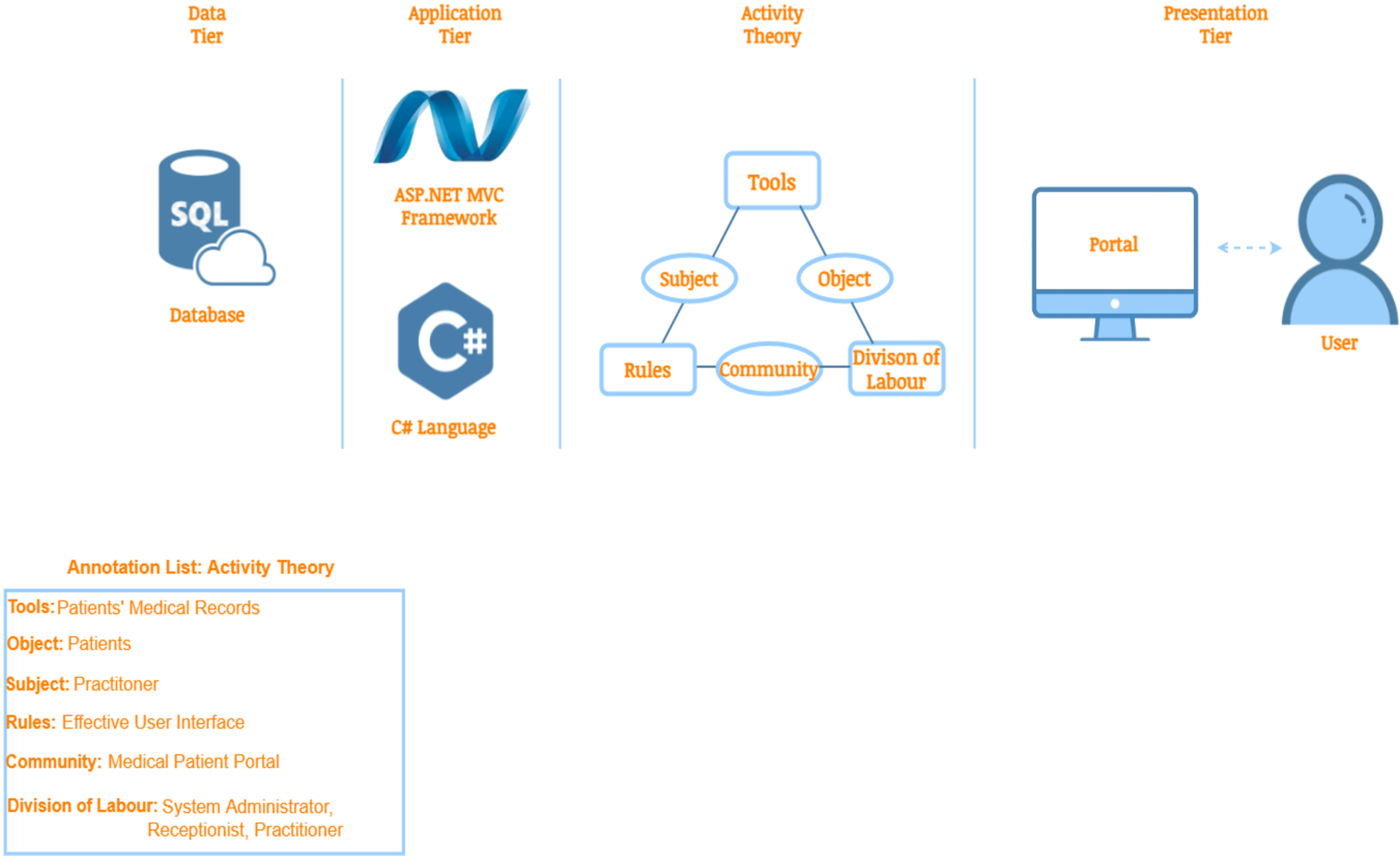Portals, which are made up of information sources, provide an interface offering a structured view of the data accessible to a user (see Figure 1). Nevertheless, there remain concerns about which factors contribute to long-term use of a portal. This project focuses on the development of medical portals that could provide the medical community with access to medical records through the web browser. Medical portals are considered to be a valid representative class of web portals, as the information they offer is by its nature large, non-trivial, and distributed. Furthermore, medical-patient portals draw their effectiveness from the extent of patient involvement they engender.
At a basic level, this project set out to define what a web portal is through functional and non-functional properties, and also defines various portal classifications. Moreover, the issue of portal usability and longevity was addressed with reference to the findings of previous researchers in developing these types of information products, coupled with a study of technologies required to construct portals, using medical portals as a representative case. By analysing previous studies, it was concluded that the most important characteristics when developing an effective portal were the level of maturity of the target users, portal usage and portal overall security.
By understanding the motivation for the use of portals, the project explored the application techniques, such as activity theory that seeks to comprehend human interaction through analysis of their activities to increase the effectiveness of portals. In the case of medical portals, studies have shown that activity theory is an effective tool for depicting the non-trivial nature of medical environments. For this reason, a system was developed through an activity-theory approach and implemented through the use of appropriate frameworks (see Figure 2). For portals to be accessible, they must be constructed in a manner that would make them simple to use, while always fulfilling both requirements and usage constraints.


Course: B.Sc. IT (Hons.) Software Development
Supervisor: Prof. Ernest Cachia
